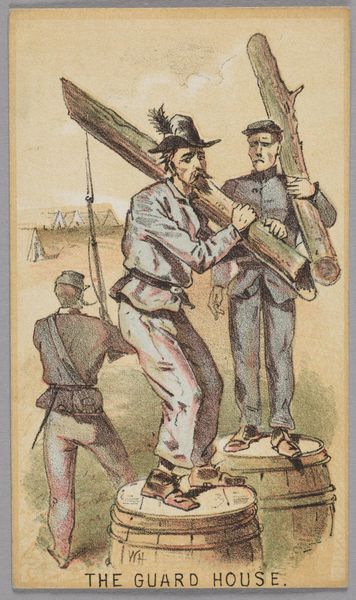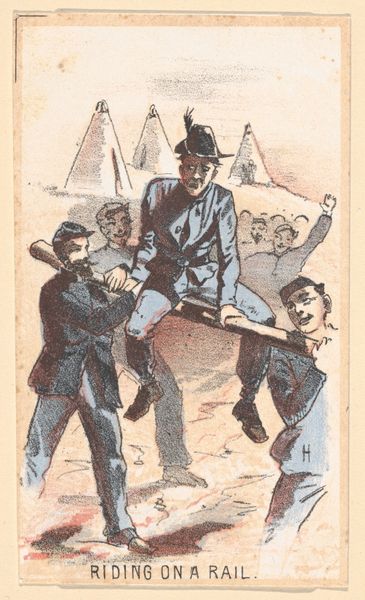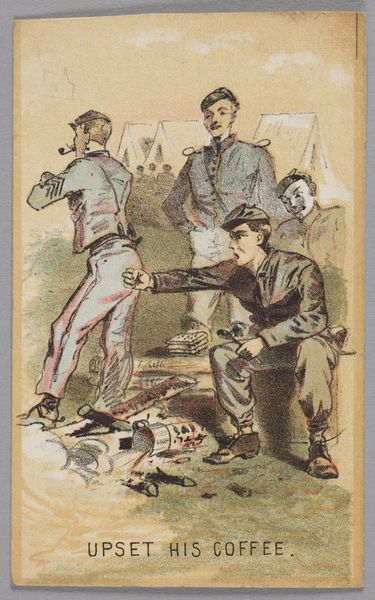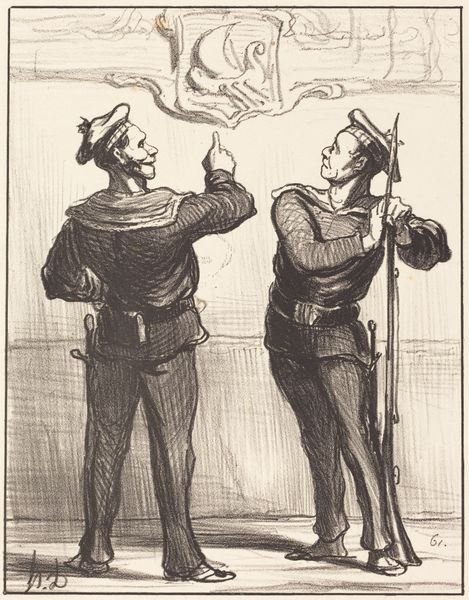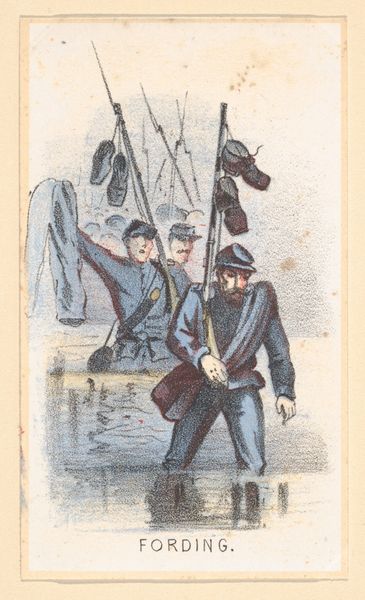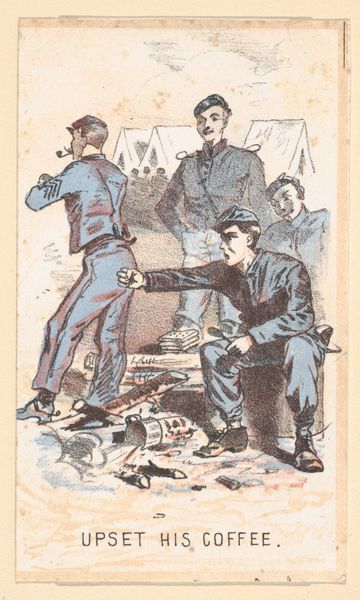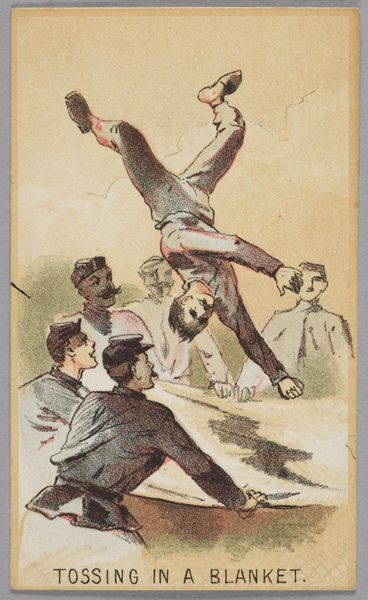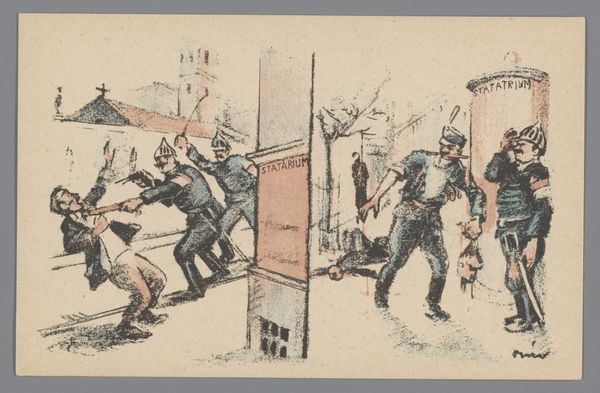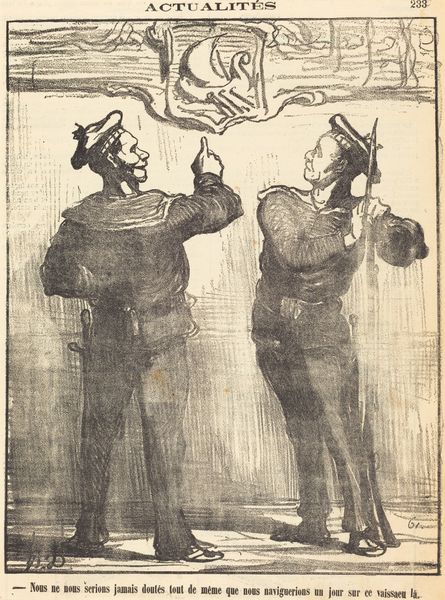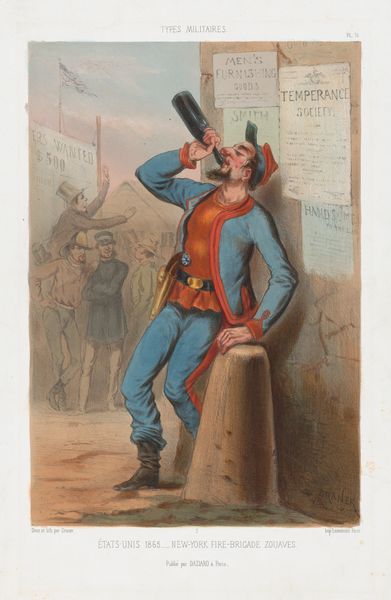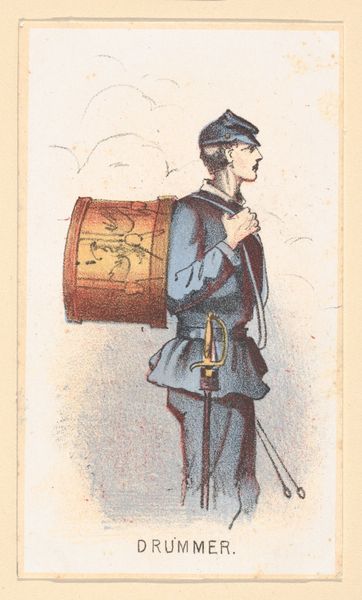
drawing, print, pencil
#
drawing
# print
#
caricature
#
caricature
#
soldier
#
pencil
#
men
#
genre-painting
Dimensions: Sheet: 4 1/8 x 2 3/8 in. (10.4 x 6.1 cm)
Copyright: Public Domain
Curator: Winslow Homer’s “Life in Camp, Part 1: The Guard House,” created in 1864, offers us a glimpse into Civil War camp life. It's rendered in pencil, then translated into print, revealing details of soldierly existence beyond the battlefield. Editor: It's immediately striking how this work balances levity with the stark realities it depicts. The composition, with men teetering atop barrels, holding timber, feels almost cartoonish at first glance, but beneath lies the weariness etched into their faces. Curator: And note how the humor functions politically. Caricature was a common visual language, particularly for political critique. Here, Homer subtly comments on the tedium and perhaps absurdity of certain camp duties through these exaggerated figures. We can't ignore that printmaking, especially during the Civil War, provided wide accessibility for social commentary and propaganda. Editor: Precisely! It makes one consider the economics of wartime entertainment. Prints like this were likely reproduced and circulated widely to keep up morale. There's something about the everyday labor—moving those heavy logs, maintaining order in a messy environment—that emphasizes a shared human condition amidst the broader conflict. You really see the way common experience brings people together despite differences. Curator: The artistic process itself also hints at that reality. Pencil sketches lent themselves to quick replication via print. Homer essentially employed a form of mass production to comment on, well, mass mobilization. The materials, even the paper and ink, become witnesses to a crucial period of American history. The drawing allows us to scrutinize the textures and the details of labor but loses depth. Editor: It makes one wonder who this print was aimed at. Was this meant for people back home who needed some comforting or to portray the soldiers to the outside world in an easy to view medium? Either way it really gets you thinking. Curator: Absolutely. The seemingly simple image speaks volumes. A work like this compels us to consider not only its subject, but also its function within the war's machinery of information. Editor: Indeed. Reflecting on it now, the artwork allows a greater appreciation for the visual culture of the Civil War era, beyond idealized portrayals of battle. It humanizes the experience through simple materiality.
Comments
No comments
Be the first to comment and join the conversation on the ultimate creative platform.
